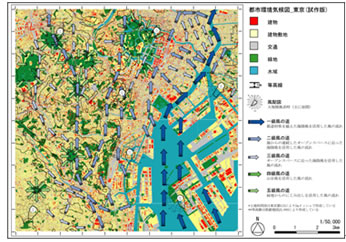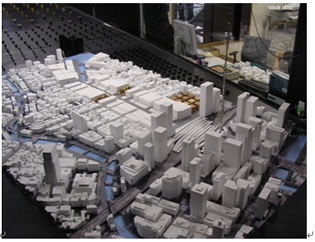Research
Building and Urban Environmental Engineering Laboratory
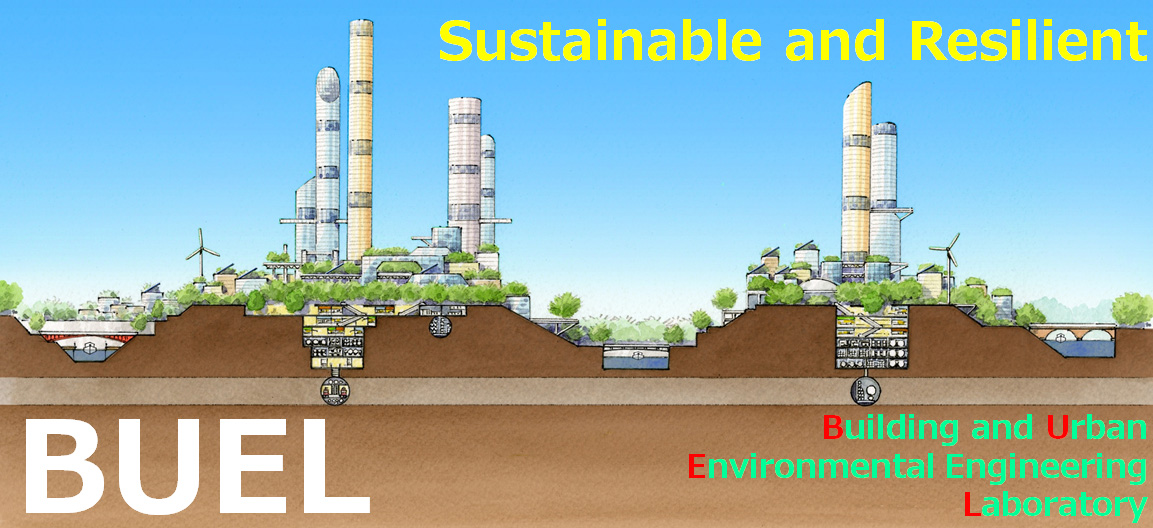
The aim of Building/Urban Environmental Engineering is to ensure people live and work in a safe, comfortable, efficient, and healthy environmental space. With the current urgency regarding building and urban function continuity for earthquake preparation in the Tokai region, as well as efforts to reduce carbon dioxide emission to address global environmental issues, and the heat island phenomenon, which is an important issue in urban regeneration, new measures to create rich and mature city environments with a high quality of life from the viewpoint of the public are needed. At the Building Environmental/Urban Environmental Engineering Laboratory, studies are underway to outline the ideal “environmental infrastructure” suitable for supporting the building and urban environments from the perspectives of both “social capital” (i.e., building equipment, urban installations, etc.) and “natural capital” (i.e., natural elements). We are engaged in research in the areas outlined below from an environmental engineering perspective—i.e., focusing on systems and mechanisms that support building and urban environments, and studying the mechanism by which such environments are created—and from the perspective of facilities engineering—i.e., system design of environmental control to achieve a desired condition. Through these activities, our laboratory actively promotes a hands-on approach to contributing to the local community, which has a high degree of social significance.
Theme 1 Development Research on Resilient Buildings and Cities (Building Continuity and Building Forensics)
Theme 2 Evaluation Study on Development of District Energy Supply System
Theme 3 Research on Development of Urban Environmental Infrastructure
Theme 1
Development Research on Resilient Buildings and Cities (Building Continuity and Building Forensics)
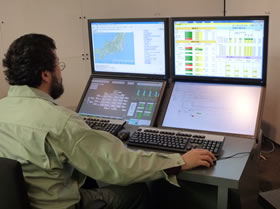
Much of the extensive indirect damage that occurs during a large-scale natural disaster stems from building and urban function failures. The prevention of functional building failures is critical in reducing such indirect damage. Organizations in Japan are now desired to establish business continuity plans (BCPs), consisting of a strategic plan for recovery and restoration of partially or completely interrupted critical functions after a disaster. The minimum requirements of conventional disaster prevention are to save lives, reduce physical damage, and prevent secondary damage. In addition to all of the above, BCPs also include efforts to maintain business continuity during disasters. This puts renewed focus on resilience of buildings, which is a new evaluation/measurement method for performance index. In our laboratory, we focus on risk management of buildings during critical times, such as earthquakes and accidents, and our work entails measures to maintain appropriate functions of buildings through the viewpoint of business continuity management as well as the development of new building safety monitoring and recording systems. In addition, the new field of building forensics involves research on scientific verification of building states as well as processes to clarify the responsibilities of different parties involved, taking into consideration the need to preserve evidence for causality insurance and to determine accountability.
Keyword
Building Continuity, BCM(Business Continuity Management), Resilience, Building Forensics
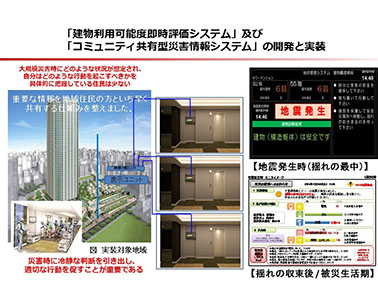
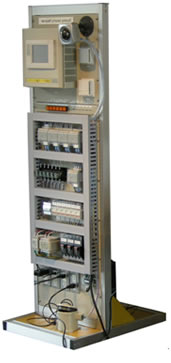
Theme 2
Evaluation Study on Development of District Energy Supply System

It has become increasingly important in the private sector to reduce CO2 as a means of combating global warming. In our laboratory, energy and water resources are considered in terms of area-wide usage coupled with an urban regeneration project, and a CO2-reduced regional energy system and water circulation system are currently under investigation. We have been investigating and examining the potential quantity of unutilized energy and exergy, matching simulation of the demands and supplies, and design and evaluation of circulation system in an actual project region from a practical standpoint. The goals of our studies are to achieve a social system in harmony with the available resources and environment maximizing the characteristics of the regions, by utilizing the current social background, including the development of measures to combat global warming.
Keyword
District Energy Supply System, Micro Grid and Thermal Grid, Exergy, Highly Protected and Secured District, Deep Underground Lifeline Network
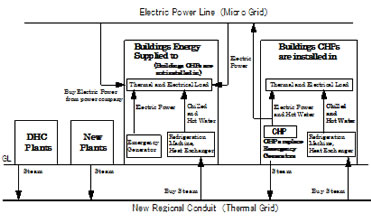
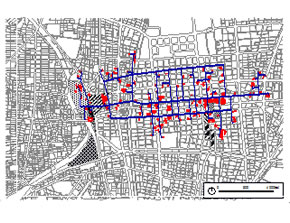
Theme 3
Research on Development of Urban Environmental Infrastructure
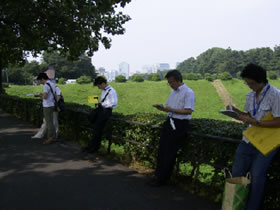
We study methods of management and controlling the risks associated with increasing temperature in urban areas due to the heat island phenomenon, which is a form of thermal pollution occurring in urban areas. We are engaged in studies of methods to evaluate the purification, dilution, and cooling capability of natural resources in urban areas, such as wind, water surfaces, and green spaces, as the environmental capacity of the local region, as well as a means of expressing the local climate, geographical characteristics, and environmental resources of the regions as an urban environment climate map, and reflecting it in urban environmental planning and policies. By improving the urban condition through the passageways for wind and water as well as green spaces, we aim to maintain a circulation system in urban areas and achieve urban design that complements the natural environment. We have revealed the “wind passage” in urban areas by detailed observation of temperature and wind fluxes in all parts of the central regions of urban areas, and this could provide means of combating the heat island phenomenon in cities. Our research results can be reflected in city planning guidelines throughout Japan and in local municipalities, as well as urban policy and environmental policies, and we place emphasis on passing the benefits of our research results onto society.
Keyword
Urban Environmental Infrastructure, Urban Thermal Environment, Urban Heat Island Phenomenon
